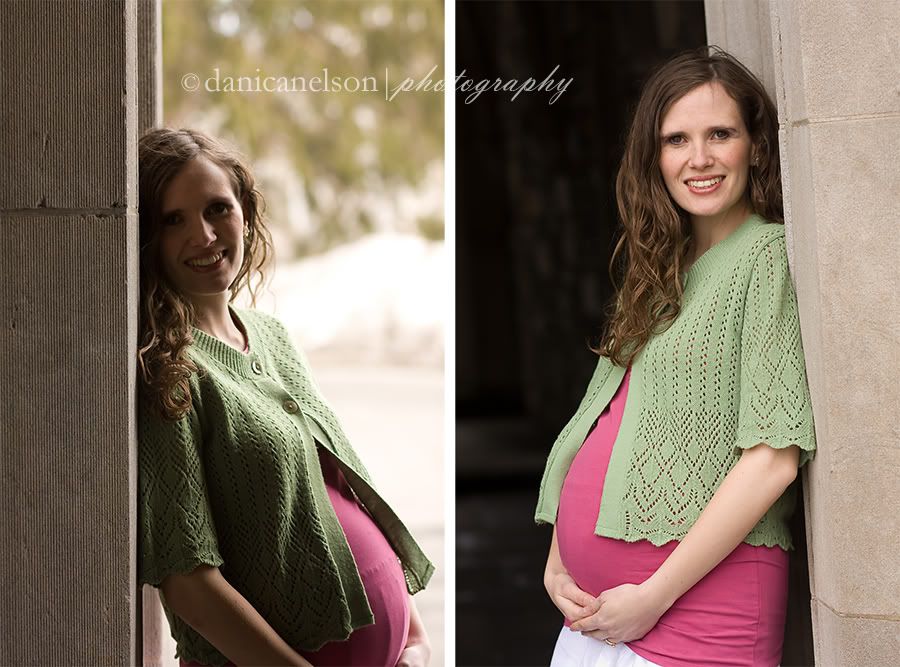Today's Tell All Tuesday post is a quick one about light. After getting the silhouette shot during Martha's session (see last post), I had her lean up against the wall of the arch for some closer portraits. I didn't pay attention to the light for a moment and shot a couple frames. When I quickly checked them out, I realized the lighting was terrible and I was shooting her from the complete wrong side. Simply walking around to the other side of Martha and shooting into the arch made a huge difference, right? In the first image, her face is mostly in shadows and the light is hitting only part of her face and very harshly. In the second image, she is lit evenly and her skin is naturally glowing (all of these images are SOOC - straight out of camera - except for an exposure fix in Camera RAW and a slight sharpening for web, by the way).


Finding the best light makes your post-processing so much easier and since I try to get it as close to right as possible IN the camera, it's important for me to always pay attention to light. Let me repeat that: ALWAYS ALWAYS ALWAYS pay attention to the light. Look around and see if another angle would light your subject more evenly. Try to look for natural reflectors in the environment around you (in this case the snow was doing a great job, but a white wall or reflective bumper would work) to bounce light into your subject's eyes so you get nice catchlights instead of dull, shadowy eyes. I'm far from perfect at this, and in the past have done a terrible job in some cases, but as I'm learning more and more it's becoming natural. Note the habits of the light coming into your home and practice placing your subjects in different ways until you get the best results. You'll begin noticing patterns and realizing the best way to light your subjects. Then when you're at a client's home, or outdoors on a shoot, you'll be better equipped to find the best light.
P.S. Another quick question from Adri: "What is a crop sensor camera?"
HERE'S AN ARTICLE that talks about the difference between a crop-sensor camera and a full-frame one. Canon cameras that are crop-sensor are the Rebel line and the 40D/50D/7D. The 5D and 5D Mark II are full-frame cameras (sorry Nikon users...I know the D700 is full-frame but am not sure about other bodies!). Some lenses are made for crop-sensor cameras (like my Tamron 17-50, which only works on crop-sensor bodies), but others aren't (like my Canon 85 1.8). My Canon 40D has a crop factor of 1.6, so when I put my 85mm lens on my crop-sensor camera, it is actually more like a 136mm lens. Does that make sense? A little bit? Let me know if you still have questions.
P.S. Another quick question from Adri: "What is a crop sensor camera?"
HERE'S AN ARTICLE that talks about the difference between a crop-sensor camera and a full-frame one. Canon cameras that are crop-sensor are the Rebel line and the 40D/50D/7D. The 5D and 5D Mark II are full-frame cameras (sorry Nikon users...I know the D700 is full-frame but am not sure about other bodies!). Some lenses are made for crop-sensor cameras (like my Tamron 17-50, which only works on crop-sensor bodies), but others aren't (like my Canon 85 1.8). My Canon 40D has a crop factor of 1.6, so when I put my 85mm lens on my crop-sensor camera, it is actually more like a 136mm lens. Does that make sense? A little bit? Let me know if you still have questions.





2 comments:
Nice tutorial Danica. This will help beginners think alot about lighting. When it clicks and you're out and realize that the light IS your shot, then you're on your way! At least, that's how I felt. :D
As for Nikon, the entry levels are not full frame (i.e. D40,50,70,80,90). In the next level, the D300 (although a fabulous camera!) is also NOT a full frame. The new D700 is and so is the upper line- D3 is the newest of those.
There are lots of articles out there like this one that will explain the crop factor to those who are wondering why it matters! And for the record, do I wish I had a full frame camera? Yes, mam. :D
http://digital-photography-school.com/full-frame-sensor-vs-crop-sensor-which-is-right-for-you
Thanks for another great Tell All Tuesday. This is something I am trying to see more as well. I like seeing the side by side pictures, it helps to what a big difference it makes just turning your subject around. Thanks again!
Post a Comment